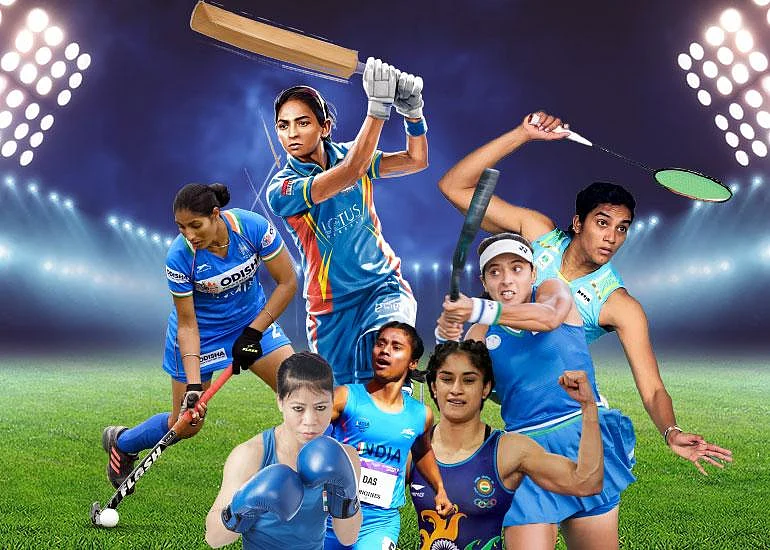Despite some exciting progress, women’s sports in India continue to battle historical inequality. From late starts and underinvestment to inadequate research and outdated infrastructure, the challenges are deep-rooted. But change is brewing. At the heart of that change lies something powerful: data and technology.
A Delayed Start with Long-Term Impacts
It’s no secret that professional women’s sports in India, as in much of the world, arrived decades after their male counterparts. For example, while men’s cricket has been a national obsession for generations, women’s cricket has only recently gained real momentum. The BCCI officially took over women’s cricket in 2006. This came nearly 80 years after the first men's Test match. This gap has resulted in slower infrastructure development, fewer grassroots opportunities, and a lack of tailored innovation for female athletes.
Cultural Biases Still Linger
Social attitudes in many parts of India have long positioned sport as a male-dominated domain. Girls have historically been nudged towards academics or domestic roles, and this has limited participation in sport. Competing at the elite level has been even harder. This mindset has also meant less attention has been paid to developing female-specific training tools, sports science, or data collection methods.
Underrepresentation in Research
A major challenge is that most sports science research is based on male physiology. Studies around injury prevention, fitness programming, or recovery protocols rarely account for female-specific needs such as hormonal fluctuations or differences in muscle mass. The lack of gender-specific data is not just an academic gap. It leads to real-world consequences such as increased injury rates and sub-optimal performance for women.
In India, initiatives like the Khelo India programme have begun to promote grassroots participation among girls. However, detailed data tracking of female athletes, especially in rural or under-resourced regions, remains patchy.
Where Technology Can Be a Gamechanger
Despite the odds, this moment offers a real growth opportunity. With smart investment in technology and data, Indian women’s sports can leapfrog some of the systemic challenges.
1. Menstrual Cycle Tracking and Female Health Monitoring
Some Indian women’s football teams and elite track-and-field athletes have started experimenting with apps to monitor the menstrual cycle and tailor training accordingly. Studies abroad show that performance and injury risk can vary across the cycle. Tools like these should become standard. Coaches in India must also be educated to have open conversations around menstruation and performance. This remains a taboo topic in many sporting circles.
2. Equipment Designed for Women
Whether it is cricket pads, track shoes, or even bicycles in road racing, most equipment has traditionally been designed for men. But we are starting to see progress. Indian brands and startups are slowly recognising the need to design gear specifically for female athletes. For instance, some recent kabaddi and hockey kits for women were created with different body dynamics in mind. This needs to become the norm rather than the exception.
3. Motherhood and Performance Support
Very few Indian sports bodies have protocols in place to support athletes through pregnancy and postpartum stages. With more athletes such as Olympic boxer MC Mary Kom proving that motherhood and elite sport can go hand in hand, there is an urgent need for research into maternity sportswear, recovery, and nutrition during this phase.
4. Smarter Data, Smarter Training
Elite academies such as JSW Sports and Inspire Institute of Sport are now using performance analytics, biometric sensors, and video breakdowns to fine-tune training. However, there is a gap in how this data is used for female athletes. Most models are still male-centric. India needs a national database that captures performance, injury trends, and progression metrics tailored to women across multiple sports, including hockey, shooting, athletics, and boxing.
5. Concussion and Injury Research
Emerging research globally suggests that women may experience different rates or recovery patterns when it comes to concussions. This is critical in sports such as wrestling, judo, and kabaddi. India must invest in female-specific sports medicine research, especially as more women enter contact-heavy sports. Early-stage efforts like AIIMS Delhi’s sports injury wing could play a key role in this area.
The Case for Better Talent Identification
Artificial intelligence (AI) is already being used to identify cricket talent in India's rural belts. However, the filters used often favour traditional male athlete profiles. Imagine an AI system trained on data from female athletes. This would include metrics such as speed, reaction time, body mechanics, and endurance. That kind of technology could unearth incredible talent from villages, tribal belts, or urban schools and offer training that understands their physiological needs.
Why It All Comes Back to Data
In a country of nearly 1.4 billion, how many girls are actively playing sport at different levels? What happens to them after school? Why do so many drop out after puberty? Without reliable, scalable data, answers to these questions are guesses at best. Just as the report Inside Track changed how motorsport viewed women’s participation globally, India too needs sport-specific gender audits. These must be nationwide research studies that map the journey of women athletes across states, income levels, and disciplines.
Conclusion: India’s Missed Opportunity or Its Next Big Leap
Investing in women’s sport is not about taking something away from men. It is about growing the entire sporting ecosystem. India, with its size, youth population, and growing tech infrastructure, is perfectly placed to lead the way.
Imagine if every sports federation had a data dashboard showing exactly how many women participate, where they drop off, what injuries they face, how they recover, and what helps them thrive. Imagine training kits built for Indian girls, not adapted from boys’. Imagine if we tracked periods, pregnancies, concussions, and comebacks, all in a system that understood the female athlete.















